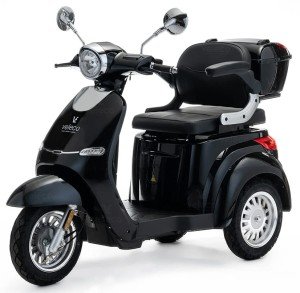Guide To Velco: The Intermediate Guide For Velco
페이지 정보
작성자 Tory 작성일25-08-06 16:03 조회7회 댓글0건관련링크
본문
Velcro: A Revolutionary Fastening Solution
Introduction
Velcro, a name that has almost ended up being associated with hook-and-loop fasteners, has changed the method we consider attaching products. Frequently a staple in different markets and households, Velcro provides an easy yet efficient option to secure objects without the need for buckles, buttons, or zippers. This short article looks into the origins, systems, applications, and advantages of Velcro along with attending to some regularly asked concerns.
The Origins of Velcro
Velcro was invented in the late 1940s by Swiss engineer George de Mestral. After a searching journey in the Alps, Mestral became captivated by the burrs that stuck to his canine's fur. Upon closer examination, he understood they functioned through a system of tiny hooks that ensnared anything with a loop, including fabric and fur. Acknowledging the capacity of this natural fastening mechanism, Mestral started a journey to recreate it in a synthetic type. By 1955, he had patented his invention, branding it "Velcro," a combination of the French words "velours" (velvet) and "crochet" (hook).
How Velcro Works
Velcro consists of 2 different pieces: a hook side and a loop side. These two elements interlock when compressed, developing a strong bond that can be easily launched with a simple pull. The performance of Velcro can be broken down into these main elements:
| Component | Description |
|---|---|
| Hook Side | This side features tiny hooks that capture and keep loops. |
| Loop Side | This side consists of soft loops designed to accept hooks when gotten in touch with. |
Mechanism of Fastening
- Interlocking: The hooks on one side catch the loops on the other, developing a physical interlock.
- Strength: The variety of hooks and loops makes sure a considerable holding strength, making it ideal for both light and sturdy applications.
- Alleviate of Use: Velcro can be disengaged and re-engaged numerous times without losing its effectiveness, setting it apart from more conventional attachment techniques.
Applications of Velcro
Velcro has actually discovered application throughout a myriad of sectors, including:
Fashion Industry
- Sportswear
- Shoes (specifically children's footwear)
- Accessories (belts, bags)
Medical Field
- Orthopedic devices
- Bandages
- Prosthetics
Automotive and Aerospace
- Seat covers
- Interior linings
- Safety equipment
Household Items
- Curtains
- Rugs
- Organizers
Industrial Use
- Cabling
- Devices attaching
- Tools storage
Benefits of Velcro
The popularity of Velcro can be credited to several advantages it uses over standard attaching approaches:
- Quick and Easy to Use: No tools are needed, making it easy to use.
- Flexible: Works on various surface areas and products.
- Adjustable: Allows for simple change in size (e.g., straps).
- Resilient: Holds up under recurring use.
- Washable: Maintains its function even after cleaning.
Potential Drawbacks
While Velcro is advantageous in many contexts, there are some limitations to be familiar with:

- Noise: The sound of Velcro being pulled apart can be loud in quiet settings.
- Wear and Tear: Over time, extreme usage may result in fraying or lowered effectiveness.
- Limitations with Heavy Loads: While it can hold considerable weight, it might not appropriate for very heavy products.
FAQs about Velcro
1. Is Velcro waterproof?
Yes, Velcro can be made from waterproof products, making it suitable for outdoor and marine applications.
2. Can Velcro be recycled?
Absolutely! Velcro is created for duplicated usage, velco - https://Www.pauldyches.Top, and lots of items can be resealed and opened numerous times.
3. How do you clean Velcro?
Cleaning up Velcro is easy. You can utilize a lint roller or a soft brush to get rid of debris. For stubborn dirt, it may be washed carefully with water.
4. Is Velcro strong enough to change zippers?
In numerous applications, yes, Velcro can successfully change zippers, particularly in instances where quick fastening and unfastening are needed.
5. Are there various kinds of Velcro?
Yes, there are many types, including differing widths, colors, adhesive strengths, and products developed for different applications (i.e., high-temperature, outdoor, etc).
Velcro has proven to be a flexible and ingenious fastening solution that has actually penetrated numerous sectors, improving both daily life and commercial applications. Its ability to offer a dependable and user friendly method of attaching makes it a long-lasting component of modern-day style. From casual garments to sophisticated medical applications, Velcro continues to support its credibility as a staple fastening method for many usages. Whether it's for the style enthusiast or an expert in the medical field, Velcro stays an unrecognized hero worldwide of attaching technology.
By reinventing how we connect and secure items, Velcro is a testimony to the power of innovative thinking and simpleness in design. As technology advances, we can just anticipate a lot more innovative applications for this exceptional invention in the future.

